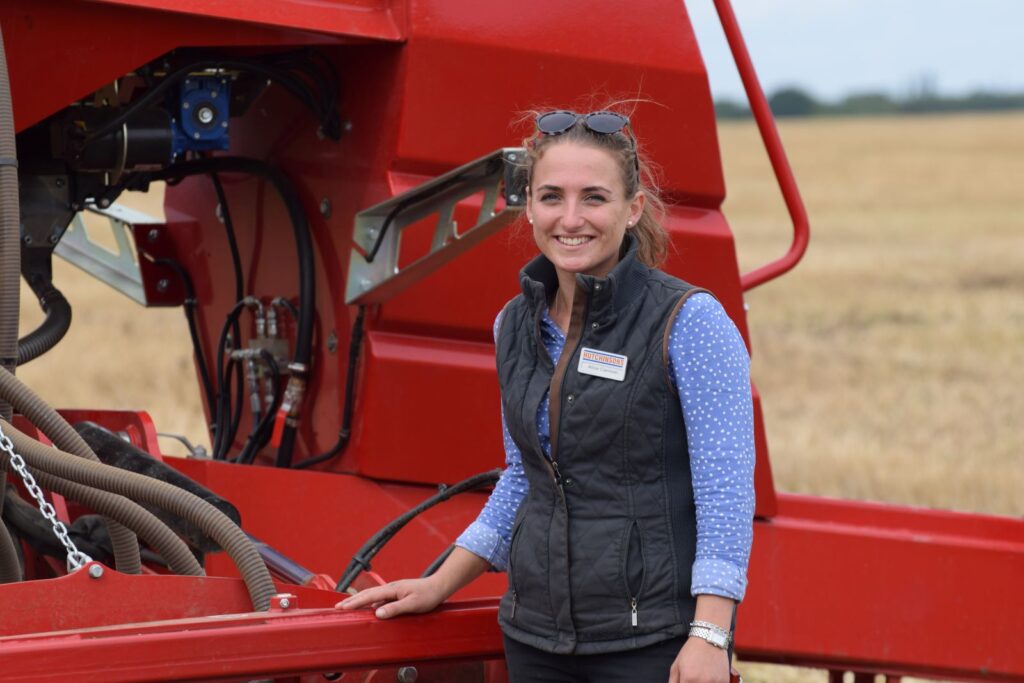Plan your OSR management carefully this season
29th March 2023
With this spring seeing high variation in OSR growth across the country, crop production specialists Hutchinsons are advising farmers to manage the crop carefully in the season ahead and in some cases consider whether it is worth further investment.

Alice Cannon, Hutchinsons agronomist and regional technical support manager.
Alice Cannon, Hutchinsons regional technical support manager based in Lincolnshire, is seeing a picture of thirds: ”One third of the crop looks fantastic, it has had a good start, got its roots down early and wasn’t sown at too high a seed rate, so has branched out and has strong stems,” she said, adding these crops show a growth of about a foot in just a week.
The second scenario, which she believes describes the majority of OSR crops, is where the crop was drilled relatively late and has just started to show signs of elongating and branching out.
“Finally, there are those crops that looked well coming out of January but have since been devastated by CSFB or Rape winter stem weevil. Unfortunately for crops in this situation, it is important to question the viability of the crop going forward with regards to additional input costs particularly considering where market prices currently sit,” she advised.
According to AHDB research, there are five main factors that contribute to high yields in OSR, four of which are managed through crop manipulation and should therefore be taken into account when making management decisions.
The best tools for manipulating crop size, Ms Cannon said, are nitrogen and plant growth regulators (PGRs).
“Firstly, aim for a GAI [Green Area Index] of 3.5 at flowering for the right number of pods – this is the primary function of the PGR and a 5cm reduction in height can be easily achieved. PGR applications also help to promote more even and well-structured branching,” she added.
“It is important to keep the crop standing,” Ms Cannon continued, “lowering crop height will help to reduce lodging. 31% of OSR lodges every year and within that figure 85% of fields have at least 10% lodged crop. For every 10% of lodged area, you can expect a yield reduction of 0.07-0.16t/ha.”
“PGR’s also help to synchronise flowering, reducing light reflectance subsequently improving light capture by crop canopy which allows even development of pods and seed. Plants should also be kept disease free.”
Management tips for the 2023 season
Since crops that are slightly backward with a GAI less than 0.8 can be manipulated through nutrition (particularly N,P, Zn), Ms Cannon said PGRs are unjustified in these cases.
“However, crops with a GAI of 0.8 or above are considered to be forward and these crops should be treated with 0.75l/ha -1l/ha metconazole + mepiquat chloride or 0.5l/ha trinexapac-ethyl,” she recommended.
For OSR crops with a GAI of 2 or greater, Ms Cannon suggested using more robust rates of specific PGR products and mixing with additional metconazole where increased PGR activity is required.
“Crops in this situation will need 1-1.2l/ha metconazole + Mepiquat chloride, adding in metconazole (0.08l/ha Metfin 90 per crop leaf),” she explained.
“An alternative is 0.5l/ha trinexapac-ethyl plus tebuconazole and/or metconazole or 0.7l/ha trinexapac-ethyl on its own (non-PGR fungicide added for disease).”
Finally, Ms Cannon noted that while triazoles have some growth manipulation effect, it is important to keep rates high and apply at least 1 litre of tebuconazole per hectare.
She explained that, although metconazole and tebuconazole have the strongest manipulation effect, this manipulation is less persistent and can be less consistent than specific PGR options.
